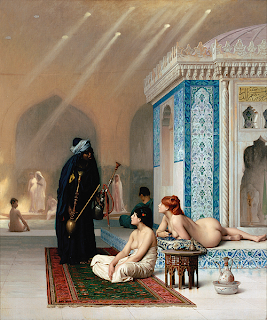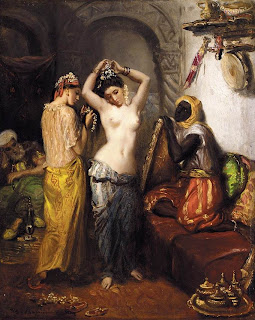If the girl opted not to marry, she was taken care of for the rest of her life. Slavery was strictly regulated by Islamic law. A slave girl’s rights and the master’s or mistress’s responsibilities towards her were clearly defined. Once purchased, no slave girl could be turned out on the streets. The owner had either to sell her, free her, give her to someone else or provide for her himself. If she had a child by the master, she gained the legal status of ‘mother of a child’ and could not be sold or given away and became free when her master died, if not freed beforehand. The child was acknowledged as legitimate and free and could inherit the same as a child from a legal marriage. The mother was then often married to her master or to an outsider and given a dowry.

If slaves were unhappy, they could ask to be resold and had the legal support of the law. If owners refused, they could run away but could not obtain freedom in this way before their term of servitude was complete. If they ran away, they had to apply to a slave dealer who would sell them to a new owner and inform the former master.
In the imperial harem, the female slaves were primarily servants, though some were used as concubines. By the end of the fourteenth century, concubinage played a major role in royal reproduction. There were a number of benefits to the Ottoman dynasty:
• It was preferable to have female consorts whose allegiance was exclusive to the sultan rather than having wives from a pool of hereditary nobility, who might challenge the sultan’s power.
• A royal consort usually had only one son because as the prince’s mentor as well as his mother, she needed to devote herself completely to his training and protection. It would not have been legally possible to force a free Muslim wife to restrict herself to one son.
• With the high infant mortality rate from disease, it was more logical not to rely on one woman’s ability to produce sons for the continuation of the dynasty.

Most slave girls were not concubines, however – only those at the top of the palace training system, who excelled in intelligence, character and accomplishments as well as beauty, were eligible as concubine candidates. In addition to being a residence for the royal family, the imperial harem was a training institution – a kind of royal finishing school. The women destined to be concubines were often trained by the sultan’s mother herself. The Valide Sultan in A Tale of Two Sisters has complete control over every woman and every slave in the imperial harem. She is second only in power to the sultan himself. For the vast majority of slave women who were not concubines, there was the opportunity to rise through the administrative ranks and enjoy a permanent career within the imperial harem or be married to a husband in the Ottoman military or administrative elite.






